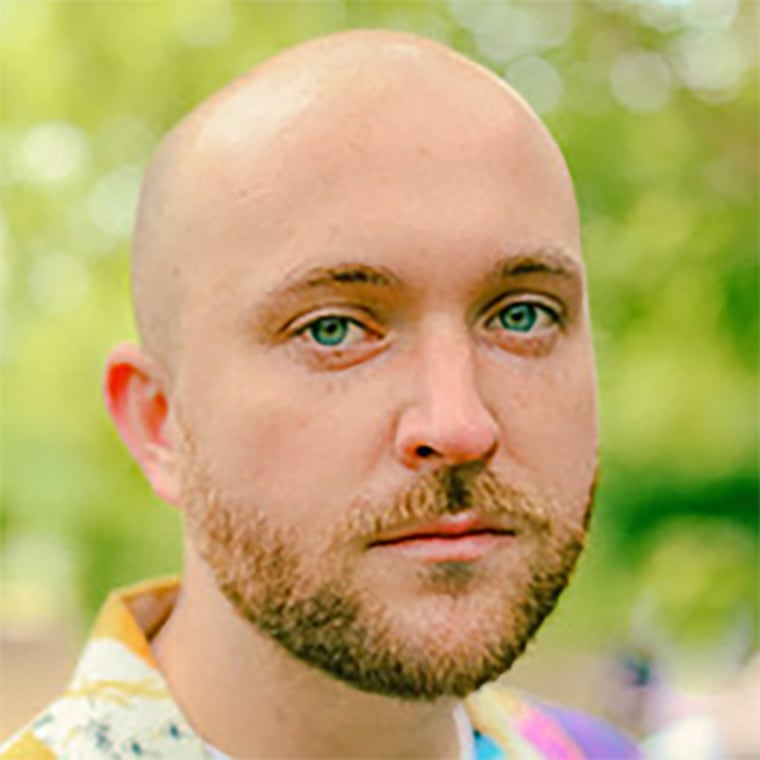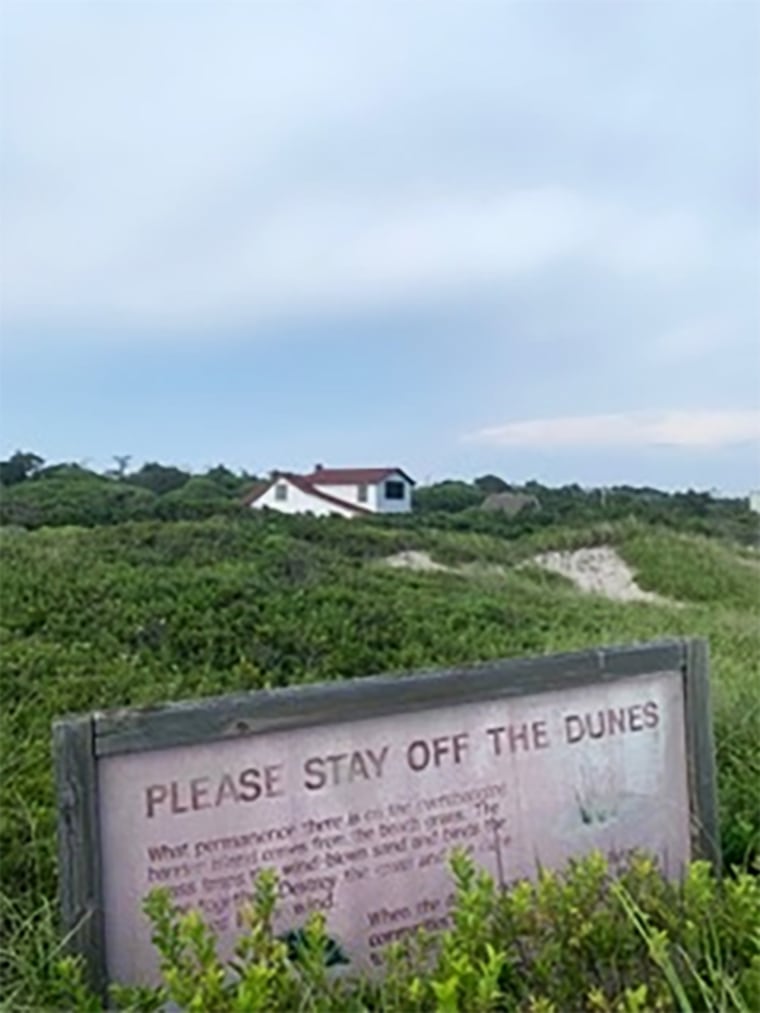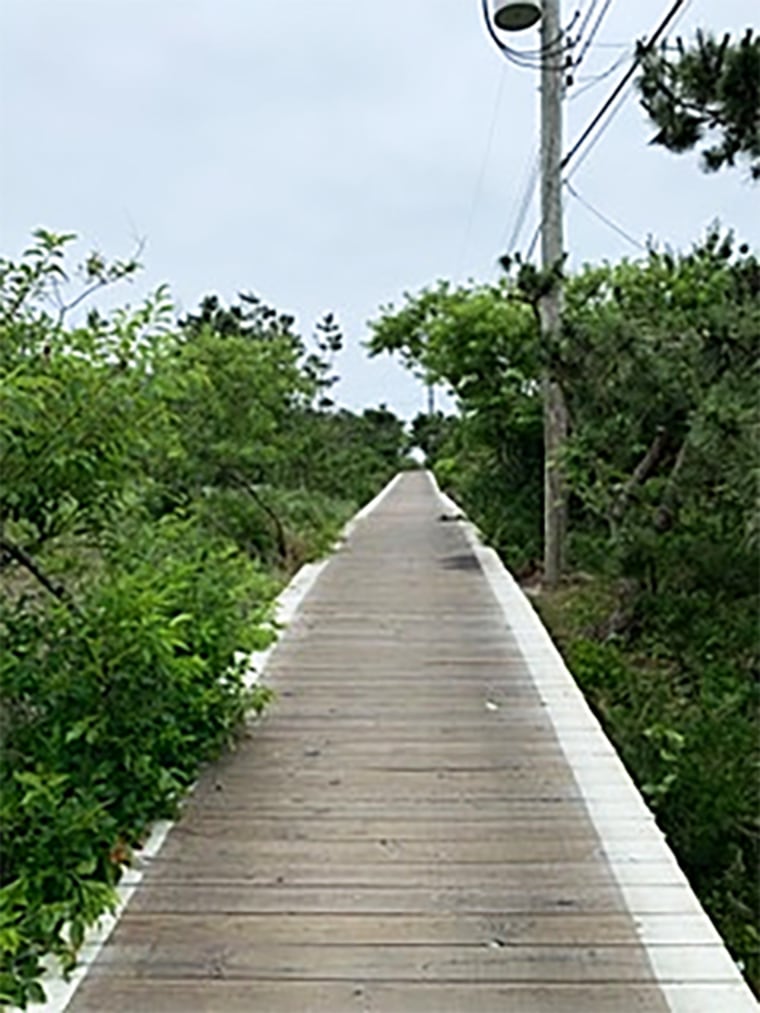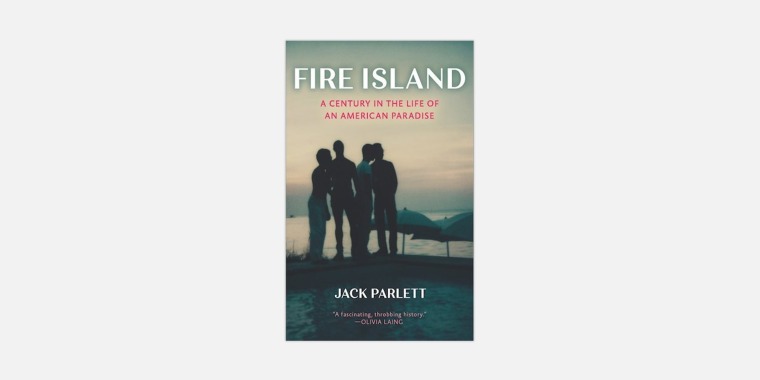Jack Parlett’s new book, “Fire Island: A Century in the Life of an American Paradise,” opens with the serendipitous meeting in 1882, in Camden, New Jersey, between two powerhouses of modern literature: a young Oscar Wilde and the elder Walt Whitman.
But it's not just the men’s brief acquaintance, nor the fact that they both wrote influential queer works of the 19th century, that interests Parlett. It’s that they both, as young men, had a hand in making the Long Island, New York, destination what it is today, even though they walked its beaches decades apart.
Parlett, an English writer and academic, uses many such moments — along with anecdotes from his life and encounters with the island — to illustrate how a sleepy, 19th-century beach community became a modern-day queer mecca for artists, pornographers, revelers and city-weary vacationers.

“Fire Island is a place where lots of people have different claims to its history — have different experiences of it,” Parlett told NBC News. “I wasn’t interested in setting out to write the singular account. I wanted it to be more meditative.”
Parlett first experienced the island five years ago, when he made a sort of pilgrimage there. He visited the site where the poet Frank O’Hara — whose work, years before, had offered him “what felt like a new, private vocabulary for loving other men” — was killed by a dune buggy in July 1966. In the introduction to the book, Parlett details reaching that point of the beach and listening to a recording of the poet, before ritualistically scrawling his name in the sand.
“After a pause, I played a recording of O’Hara reading ‘Ode to Joy,’ his voice tinny but unmistakable,” he writes. “In that moment, the utopian bluster of the poem’s first line felt resonant: ‘We shall have everything we want and there’ll be no more dying.’
“What did I want from Fire Island? I had gone there, in part, to commune with its ghosts,” Parlett continues. “Just as O’Hara had scrawled James Dean’s name into the sand during a visit on the same weekend in 1955 that the young actor died in California, so I had gone to the Pines in 2017 to write ‘Frank’ in the sand.”

That summer, Parlett was in New York City working on a project about American poetry and cruising. While in the midst of thinking about queer sex cultures, and the spaces that house them, the visit to Fire Island planted a seed for the newly released work. As he describes it, he felt “a particular alchemy with the place,” which had lived in his mind as both a mythic space and the meeting point of prominent literary figures.
Beginning with O’Hara and a handful of pre-selected writers, such as Andrew Holleran, Edmund White and Felice Piccano, Parlett began researching the island’s residents and notable visitors. And, in the process, he discovered a new set of influential queer writers who had spent significant chapters of their careers there, including Carson McCullers, Patricia Highsmith, James Baldwin and W. H. Auden.
“Quite a lot of those writers spent time there but didn’t necessarily write about it. So you had to go digging to retrace their footsteps on the island,” Parlett said, adding that unearthing these connections felt like falling down a rabbit hole.
As Parlett tumbled deeper into the past, conflicting ideas emerged through the writers’ experiences on the island that, on its face, promised freedom and pleasure. Notoriously heavy drinkers like McCullers and Highsmith moved in the same circle with Marty Mann, an early figure in Alcoholics Anonymous, an organization that has often been at odds with the LGBTQ community because of its religious ties.
Baldwin, who visited throughout the 1950s and ‘60s when he was a high-profile civil rights activist, found himself looking for respite in an almost exclusively white community. Across generations, writers from Auden to Holleran observed how body fascism influenced the parade of barely clothed, toned bodies on the island’s beaches and dance floors.
“You can’t talk about Fire Island without addressing how exclusive it is, and how exclusionary it can be,” Parlett said.

According to the author, any discussion of Fire Island must also include its storied hamlets: the historic, party-centric Cherry Grove and the more subdued, affluent Pines. The history of the hamlets are woven throughout the book, which traces how the areas were developed, beginning with a hurricane that hit the island in 1938.
“They are very different places, Cherry Grove and the Pines,” Parlett said. “Sometimes, it can be easy to overstate those differences or the rivalry between them. But crucial to any reader’s understanding of the place is understanding how they were developed differently, the different kinds of demographics they’ve catered to historically, and the different ways that people dress — or undress.”
Parlett, whose book was published in both the U.S. and U.K. this month, anticipates that some of his readers will already have a sense of these distinctions, having already made many pilgrimages of their own.
“The stakes will be different for people for whom this is an imaginary space — its own kind of literary tourism — as compared to people who live in New York and elsewhere for whom this is a really sacred space and has been for a long time,” Parlett said. “The book is for both categories of people.”
“I’m not that card-carrying member of the Fire Island community. I come to that as an outsider, but [one] for whom these questions matter, too,” Parlett said. “Fire Island is certainly a place that feels important to me as a queer person. That’s how I found it.”
